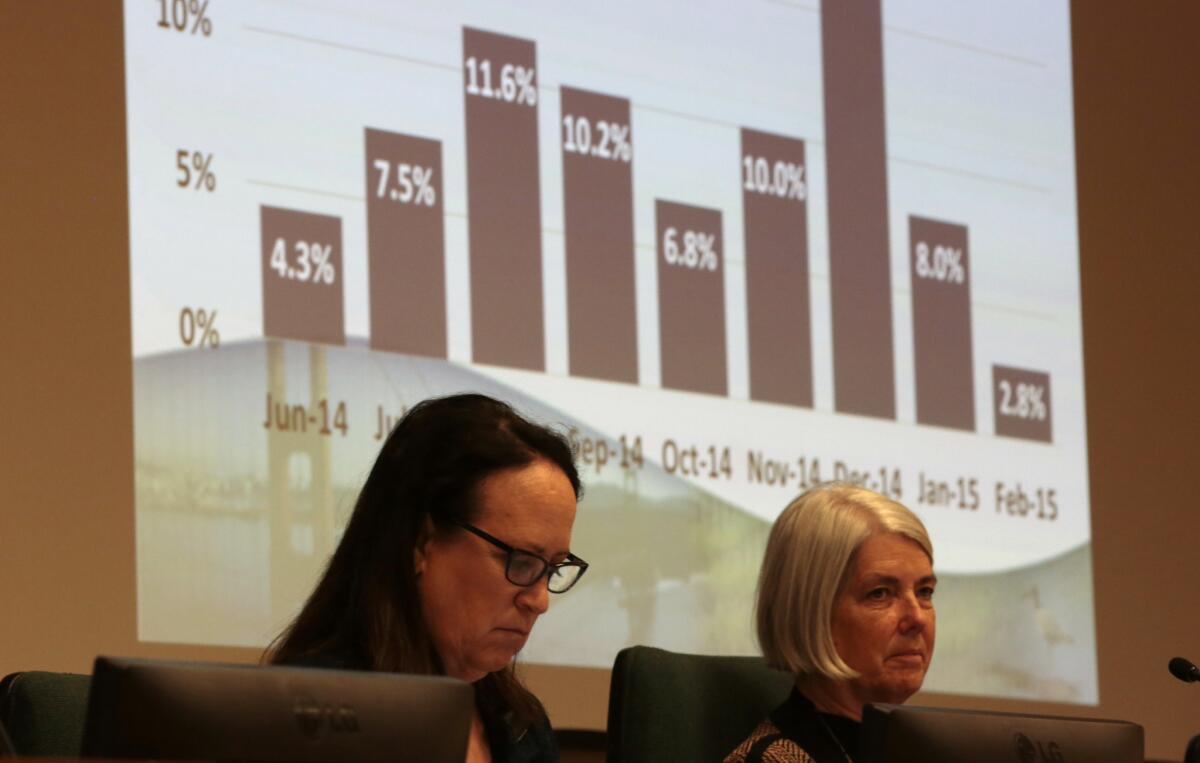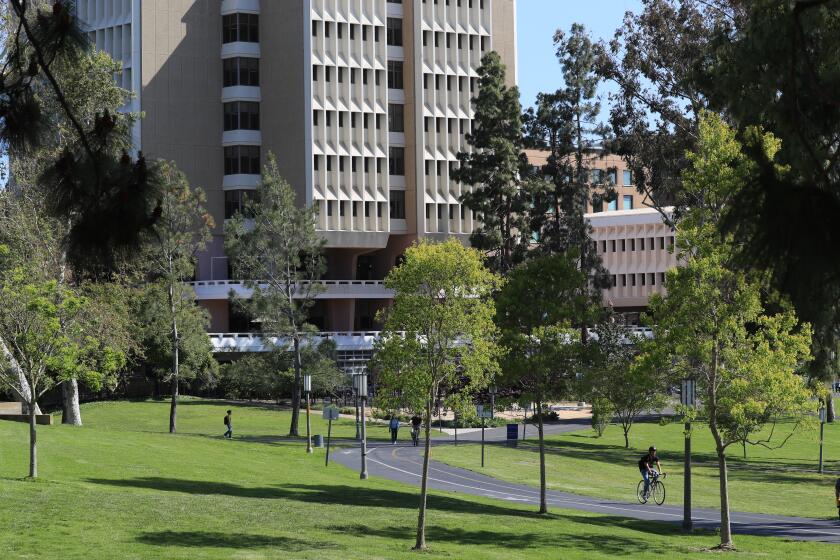Southern California lags behind in water conservation

The chair of the State Water Resources Control Board, Felicia Marcus, left, and vice chair Frances Spivy-Weber, listen as state officials announce April 7 that water conservation decreased in California in February.
- Share via
Reporting from Sacramento — Water use in California dropped only 2.8% in February compared with the same period in 2013, in what officials said was an alarming trend.
The decline is significantly less than what the state posted in January and December. In January, water use dropped 8% and in December it dropped 22%.
Southern California increased its water use by about 2.3% in February while most of the rest of the state decreased usage, officials said.
“It’s really sobering times,” State Water Resources Control Board Chairwoman Felicia Marcus said at a meeting of the panel Tuesday. “Everyone needs to step up.”
Marcus said the low conservation figures could be the result of increasing economic activity and unusually warm weather.
The silver lining is that the bad numbers were in February, she said, which is a month with low water use overall. If there was a similar decline in a hot summer month, “we’re in a world of hurt,” she said.
------------
FOR THE RECORD
12:33 p.m.: An earlier version of this article stated that Southern California cut its water use by about 2.3% in February while most of the rest of the state increased usage. In fact, Southern California increased its water use by about 2.3% in February versus the same month in 2013, while most of the rest of the state decreased usage.
------------
RELATED: From steak to mangoes, here are some water-hogging foods
The numbers were released as officials were set to unveil details on how they plan to implement Gov. Jerry Brown’s order to cut water use by 25%.
They are expected to more clearly explain how much water communities will have to conserve under Brown’s order. Those that don’t will face fines.
“The gentle nudge is no longer sufficient,” said Max Gomberg, the state water board’s senior scientist. “We’re taking the enforcement piece very seriously.”
Each local water agency eventually will be given a reduction order, based in large part on its per-capita water use. Areas with low use will likely have to reduce consumption by less than 25%; those with high water use likely will have higher targets.
Water districts will receive what Gomberg called a “high-level framework” with more details on Tuesday.
Agencies that don’t comply with the rules can be fined as much as $10,000 a day for noncompliance -- “the ultimate remedy,” Gomberg said.
Local officials will have to determine how to reach the governor’s water-saving benchmarks.
Per-capita water use varies widely.
Residents in communities such as La Cañada Flintridge, Malibu and Palos Verdes all used more than 150 gallons of water per capita per day in January. By contrast, Santa Ana used just 38 gallons and communities in southeast Los Angeles County used less than 45.
Water usage in Los Angeles was 70 gallons per capita per day. But a recent UCLA study examining a decade of Department of Water and Power data showed that, on average, wealthier neighborhoods within the city consume three times more water than less affluent ones.
High water use by upscale cities is about more than lifestyle. Such communities tend to have fewer apartments and less dense housing. The dwellings tend to be larger and include sprawling grounds in need of water.
Faced with dwindling regional reserves and a fourth year of drought, the Metropolitan Water District of Southern California is expected to vote next week to ration imported water that it supplies to 26 Southland water districts and cities, something the agency has done only twice before.
Local agencies that need more water than the MWD allocation will be required to pay punitive surcharges of up to $2,960 an acre-foot for the extra deliveries.
For purchases well beyond the allocation, that would increase the price of fully treated MWD water by about four times.
For drought-related coverage, follow @ByMattStevens and @ChrisMegerian
More to Read
Sign up for Essential California
The most important California stories and recommendations in your inbox every morning.
You may occasionally receive promotional content from the Los Angeles Times.












